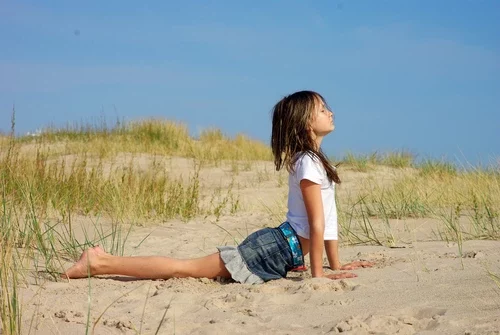How To Get Your Kids Moving

Childhood obesity is now an epidemic in the United States. There are 10 times as many children with diabetes than 20 years ago, and about one-third of children ages 2 to 19 are now overweight or obese.
The fact is kids aren’t getting the exercise they need to stay healthy. Not even one-third of our nation’s kids ages 6 to 17 get 20 minutes of vigorous exercise daily, while the 2010 Nation Report from the American Heart Association and the National Association for Sport and Physical Education recommend at least one hour of exercise a day for people of all ages.
New Report Explains Causes of Childhood Obesity
The report addresses some causes of this growing issue:
“The reality, of course, is that children and adolescents in the United States are primarily sedentary. Most kids under age 18 spend the majority of their day sitting in classrooms, and a big part of their free time outside of school watching television, playing video games, or surfing the Internet.”
Getting kids into the habit of regular exercise early on has an enormous benefit on the rest of their lives. A healthy body means a healthy mind for better grades and improved problem-solving skills. Increased circulation of immune cells in the blood promises a healthy immune system to help prevent sickness and the flu. Regular physical activity and a strong immune system can even lower the risk of cancer.
So getting exercise sounds like a no-brainer, right? The big problem is getting kids off their computers, video games, cell phones, iPads, and other gadgets.
How to Help Kids Stay Active
Here are some simple, straightforward ways to get your kids off their seats and onto the playground:
-
Don’t make it feel like a chore. Exercise needs to be a part of their daily schedule; it shouldn’t feel like a punishment. Allow your kids to exercise in small bursts throughout the day with activities like skateboarding to class or rollerblading to a friend’s house.
-
Keep it fun! Thirty minutes on a treadmill may do the job for you, but most likely your kid doesn’t feel the same way.
-
Encourage physically engaging activities after school. Sports like soccer and basketball are fun and teach the value of good teamwork. Organized sports are not for everyone, though. Whether it’s gymnastics, swimming, or an independent activity like biking, help your child find an activity that appeals to them.
-
Mix it up. Keep a list with a variety of fun physical activities and there will never be “nothing to do.”
-
Try something new, like Yoga. Yoga is one of the fastest-growing sports in America, with close to 20 million people practicing, and it’s not just for adults. Kids yoga programs are popping up in schools and yoga studios all over the country, offering a fun new way to get kids moving. Children love the way it also calms their minds and relieves the stresses of their day. Want to find a studio near you? Organizations like the Yoga Alliance help direct parents to the right yoga program for their kids.
-
Lead by example. Act as a role model by staying active. Embrace exercise in a positive way, and children will follow your lead.
-
Exercise together. Planning family outings like canoeing or swimming is a great way to get everyone involved. Picking an afternoon for some one-on-one exercise time is also instrumental for their future. Activities like teaching your kid to play a new sport not only gets them moving, but the bond you share will teach them there is a lot more to exercise than sweating and aching muscles.



